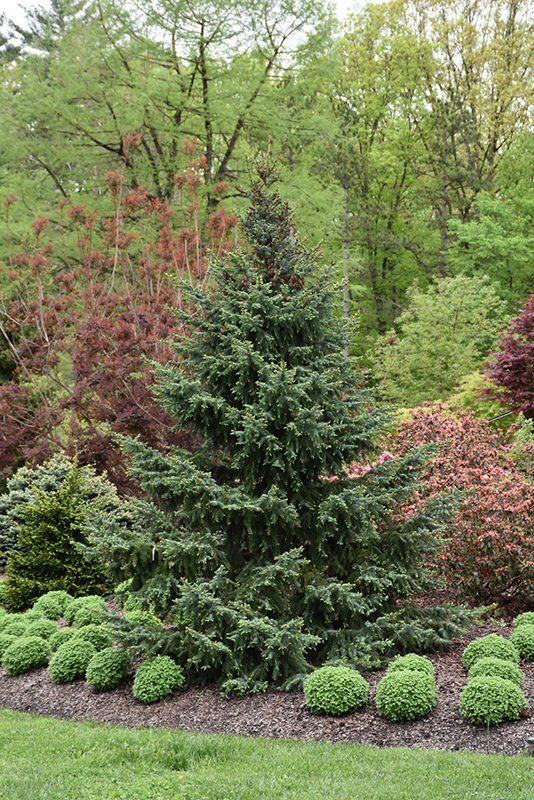PLANT FINDER
* This is a "special order" plant - contact store for details
Height: 30 feet
Spread: 15 feet
Sunlight:
![]()
Hardiness Zone: 4a
Description:
Pyramidal form and dense graceful branches create a striking sea green and silver structure, wider at the bottom, sweeping up to a spire; this large handsome cultivar commands attention; loves deep rich well drained soil and full sun
Ornamental Features
Bruns Spruce is primarily valued in the landscape for its rigidly columnar form. It has attractive bluish-green foliage with gray undersides which emerges light green in spring. The needles are highly ornamental and remain bluish-green throughout the winter. The smooth brick red bark adds an interesting dimension to the landscape.
Landscape Attributes
Bruns Spruce is a dense evergreen tree with a strong central leader and a narrowly upright and columnar growth habit. Its relatively fine texture sets it apart from other landscape plants with less refined foliage.
This is a relatively low maintenance tree. When pruning is necessary, it is recommended to only trim back the new growth of the current season, other than to remove any dieback. It has no significant negative characteristics.
Bruns Spruce is recommended for the following landscape applications;
- Accent
- Vertical Accent
Planting & Growing
Bruns Spruce will grow to be about 30 feet tall at maturity, with a spread of 15 feet. It has a low canopy, and should not be planted underneath power lines. It grows at a slow rate, and under ideal conditions can be expected to live for 80 years or more.
This tree should only be grown in full sunlight. It does best in average to evenly moist conditions, but will not tolerate standing water. It is not particular as to soil type or pH. It is quite intolerant of urban pollution, therefore inner city or urban streetside plantings are best avoided, and will benefit from being planted in a relatively sheltered location. This is a selected variety of a species not originally from North America.
* This is a "special order" plant - contact store for details


